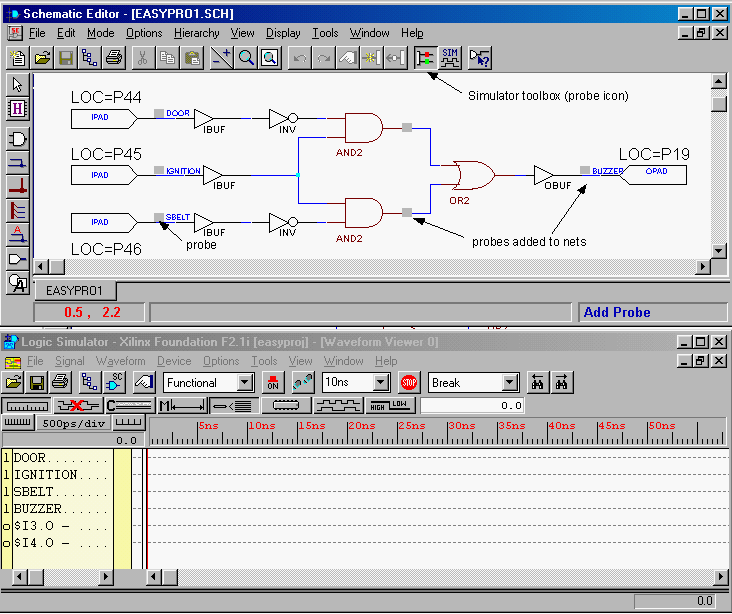Time: 2025-02-07 11:08:37View:
Functional simulation and timing simulation are two critical types of simulations used in the design and verification of digital circuits, such as those implemented in FPGAs or ASICs. They serve different purposes and focus on different aspects of the design. Here’s a breakdown of the differences:

Purpose: To verify the logical correctness of the design.
Focus: Ensures that the design behaves as expected from a logical perspective, without considering the timing delays of the physical implementation.
Key Characteristics:
Timing Ignored: Functional simulation does not account for the actual timing delays of gates, wires, or other components. It assumes zero delay for all elements.
High-Level Verification: It is used early in the design process to validate the functionality of the design against the specification.
Speed: Generally faster than timing simulation because it does not involve detailed timing analysis.
Tools: Commonly performed using high-level simulation tools like ModelSim, VCS, or Xilinx Vivado Simulator.
Use Cases:
Initial verification of the design logic.
Debugging of functional issues.
Ensuring that the design meets the high-level requirements.
Purpose: To verify that the design meets timing requirements after considering the physical implementation.
Focus: Ensures that the design not only functions correctly but also operates within the required timing constraints, accounting for real-world delays.
Key Characteristics:
Timing Considered: Timing simulation includes the actual delays of gates, interconnects, and other components, as well as setup and hold times for flip-flops.
Post-Implementation: It is performed after the design has been synthesized, placed, and routed, using the actual timing information from the implementation tools.
Accuracy: Provides a more accurate representation of the design's behavior in the real world, including potential timing violations.
Speed: Generally slower than functional simulation due to the detailed timing analysis involved.
Tools: Performed using tools like Xilinx Vivado, Intel Quartus, or Synopsys PrimeTime.
Use Cases:
Verifying that the design meets timing constraints.
Identifying and resolving timing violations.
Ensuring reliable operation at the target clock speed.
| Aspect | Functional Simulation | Timing Simulation |
|---|---|---|
| Timing Delays | Ignored (ideal behavior) | Included (real-world delays) |
| Purpose | Validate logic correctness | Validate timing reliability |
| Stage | Early design phase (pre-synthesis) | Post-implementation (post-synthesis) |
| Speed | Fast | Slow (due to timing calculations) |
| Critical Issues | Logic errors (e.g., bugs in code) | Timing violations (e.g., setup/hold failures) |
Functional Simulation: Ensures the design works logically.
Timing Simulation: Ensures the design works physically at the target speed.
A design might pass functional simulation but fail timing simulation due to delays (e.g., signals missing clock edges). Both steps are critical for reliable hardware.
Analogy:
Functional simulation = Testing a car’s engine in a lab (does it run?).
Timing simulation = Testing the car on a race track (does it run fast enough without overheating?).
Functional Simulation: Focuses on logical correctness without timing details. It is faster and used early in the design process.
Timing Simulation: Focuses on both logical correctness and timing accuracy. It is slower and used after the design has been physically implemented.
Both types of simulations are essential for ensuring that a digital design is both functionally correct and capable of operating reliably under real-world timing conditions.